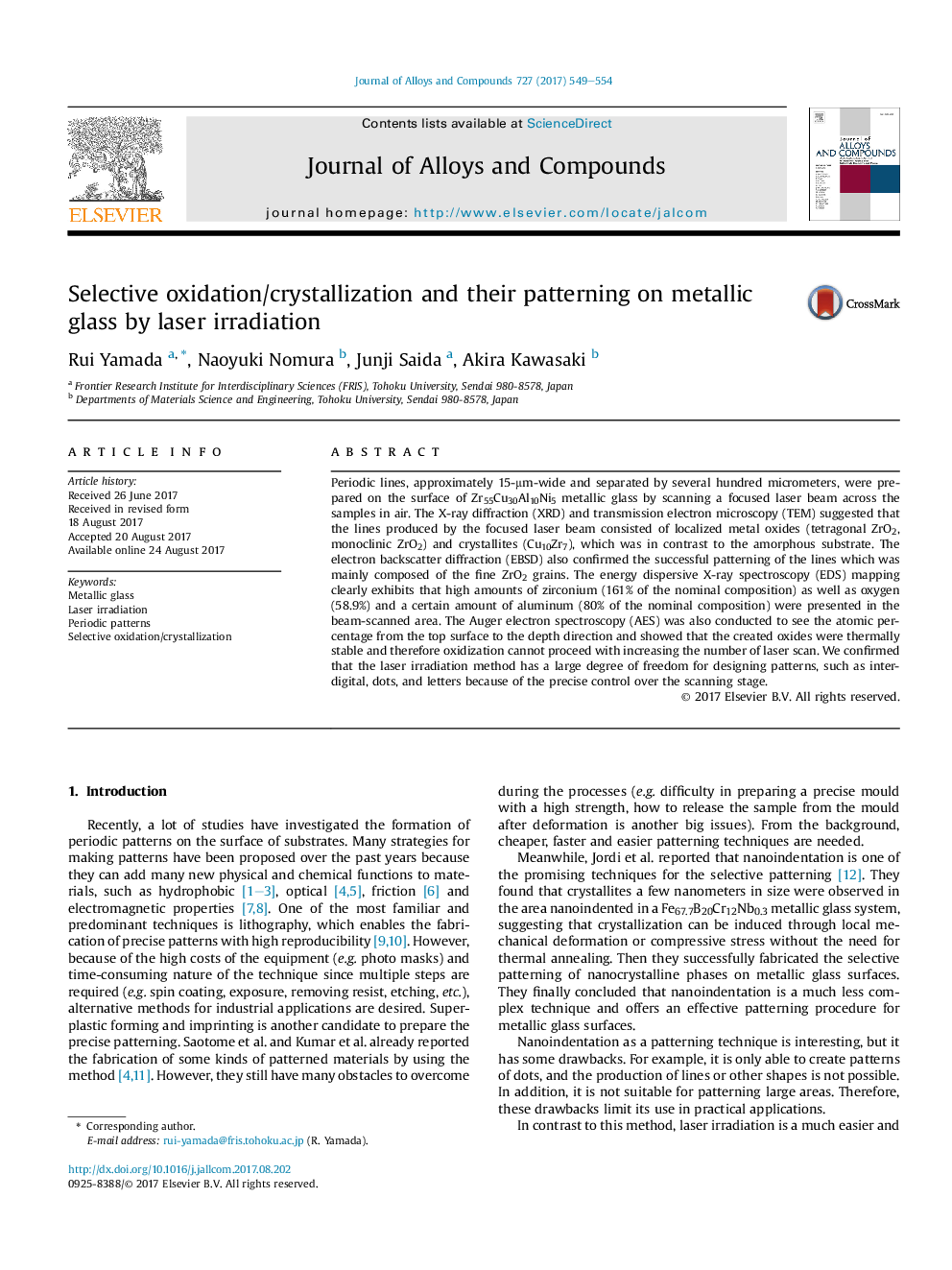| Article ID | Journal | Published Year | Pages | File Type |
|---|---|---|---|---|
| 5458839 | Journal of Alloys and Compounds | 2017 | 6 Pages |
Abstract
Periodic lines, approximately 15-μm-wide and separated by several hundred micrometers, were prepared on the surface of Zr55Cu30Al10Ni5 metallic glass by scanning a focused laser beam across the samples in air. The X-ray diffraction (XRD) and transmission electron microscopy (TEM) suggested that the lines produced by the focused laser beam consisted of localized metal oxides (tetragonal ZrO2, monoclinic ZrO2) and crystallites (Cu10Zr7), which was in contrast to the amorphous substrate. The electron backscatter diffraction (EBSD) also confirmed the successful patterning of the lines which was mainly composed of the fine ZrO2 grains. The energy dispersive X-ray spectroscopy (EDS) mapping clearly exhibits that high amounts of zirconium (161% of the nominal composition) as well as oxygen (58.9%) and a certain amount of aluminum (80% of the nominal composition) were presented in the beam-scanned area. The Auger electron spectroscopy (AES) was also conducted to see the atomic percentage from the top surface to the depth direction and showed that the created oxides were thermally stable and therefore oxidization cannot proceed with increasing the number of laser scan. We confirmed that the laser irradiation method has a large degree of freedom for designing patterns, such as interdigital, dots, and letters because of the precise control over the scanning stage.
Related Topics
Physical Sciences and Engineering
Materials Science
Metals and Alloys
Authors
Rui Yamada, Naoyuki Nomura, Junji Saida, Akira Kawasaki,
